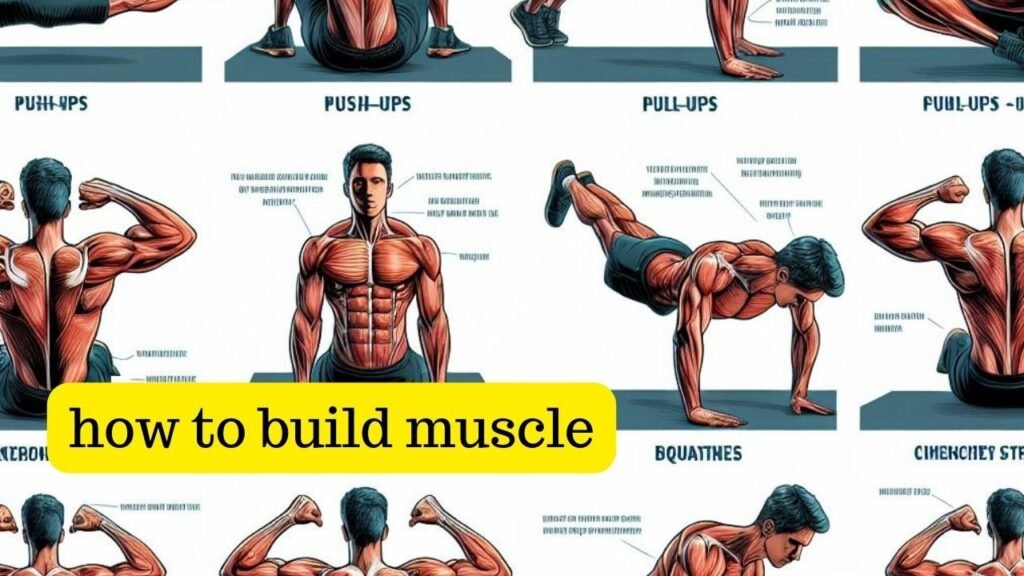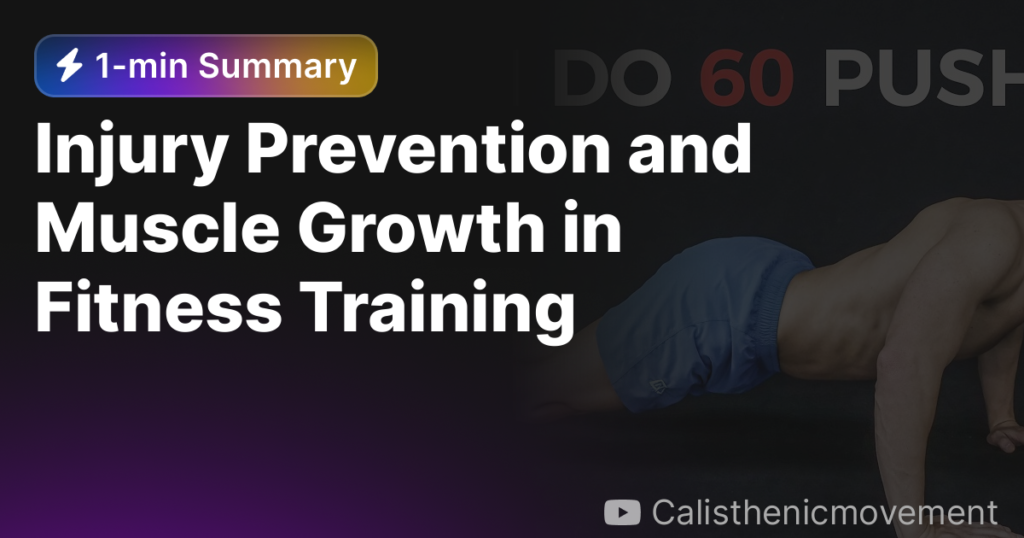Introduction
Embarking on the journey to Build Muscle is a transformative endeavor that requires dedication, knowledge, and strategic planning. Whether you are just starting out or already have some experience, you need to follow a smart and healthy approach to muscle growth. That’s why you should check out the wellhealth how to build muscle tag program, which is a comprehensive and holistic guide to Building Muscle.
This program is based on the latest scientific research and provides proven tips and techniques that will help you reach your muscle-building goals faster. In this article, we will delve into the key aspects of Building Muscle, such as nutrition, training, recovery, and mindset. You will also find out how the WellHealth How to Build Muscle Tag program can improve your overall health and well-being along with your muscle gains.
Fundamentals of WellHealth How to Build Muscle Tag
Embarking on the journey of Muscle Building necessitates a firm understanding of the basic principles that govern muscle growth. At its core, the muscle growth process is scientifically called Hypertrophy. Hypertrophy occurs when individual muscle fibers increase in size, resulting in overall muscle development. Two primary types of Hypertrophies contribute to muscle growth: Myofibrillar Hypertrophy, which involves an increase in the size and number of contractile protein units within muscle fibers. The other is Sarcoplasmic Hypertrophy, which focuses on the growth of the muscle cell’s non-contractile components.
Importance of nutrition in Muscle Building
A pivotal aspect of Muscle Building is nutrition. Crafting a diet conducive to muscle growth involves understanding the role of macronutrients—proteins, carbohydrates, and fats. Protein, in particular, emerges as a cornerstone in muscle development due to its function in facilitating Muscle Protein Synthesis (MPS). Achieving a caloric surplus, where calorie intake exceeds expenditure, becomes essential for providing the energy needed for rigorous workouts and supporting muscle growth.
Protein intake must align with individual body weight and training intensity to optimize muscle protein synthesis. Beyond macronutrients, nutrient intake timing, especially around workouts, influences muscle growth. Pre and post-workout nutrition strategies, such as the consumption of protein and carbohydrates, contribute to muscle repair and glycogen replenishment.
In addition to macronutrients, micronutrients like vitamins and minerals play a supportive role in muscle function and overall health. Balancing the nutritional aspects of Muscle Building creates an environment conducive to sustained growth.
Understanding the interplay between nutrition and muscle growth enables individuals to make informed dietary choices that align with their fitness goals. Whether learning wellhealth how to build muscle tag or focusing on Hypertrophy, a well-rounded nutritional approach ensures that the body receives the necessary fuel to support rigorous training and maximize the benefits of resistance exercises. Aspiring muscle builders are encouraged to seek guidance from nutrition experts or registered dietitians to tailor dietary plans that cater to individual needs and optimize the muscle-building process.
Learning How to Build Muscles
Building Muscles is not only a matter of aesthetics but also of health and performance. Muscles help you move, lift, and protect your bones and joints. They also improve your metabolism, posture, and confidence. However, Building Muscles is not easy. It requires a combination of resistance training, nutrition, and recovery. Here, we will guide you through the basics of how to Build Muscles, from choosing the right exercises to eating the right foods:
Choosing the right exercises
The key lies in prioritizing compound exercises that engage multiple muscle groups simultaneously, maximizing the efficiency of your workouts. Compound movements, including squats, deadlifts, bench presses, and overhead presses, stimulate the release of growth-promoting hormones, fostering overall muscle development.
In addition to compound exercises, incorporating isolation exercises can target specific muscle groups, addressing any potential imbalances and ensuring comprehensive muscular growth. Tailor your exercise selection to align with your fitness goals, emphasizing progressive overload to challenge your muscles continually.
Diversifying your routine prevents monotony, keeps your workouts engaging, and ensures that all muscle fibers are adequately stimulated. By customizing your exercise repertoire based on your fitness level, preferences, and desired outcomes, you create a well-rounded approach that fosters balanced and sustainable muscle development.
Preparing workout plan for Building Muscle
The second step to Building Muscles is to prepare a workout plan that suits your goals, schedule, and lifestyle. A workout plan is a structured and organized program that tells you what exercises to do, how many sets and reps to perform, how much weight to lift, how long to rest, and how often to train. A workout plan helps you stay focused, motivated, and consistent with your training.
The table below shows that the workout plan consists of six days of exercise and one day of rest or active recovery. The exercise days are divided into four categories: upper body push, lower body, upper body pull, and full body strength. Each category works on different muscles and movements and alternates between high and low intensity. The cardio and core day is a moderate-intensity session that improves cardiovascular endurance and core stability. The rest or active recovery day is a low-intensity session that allows the muscles to recover and prevent overtraining.
Day
Workout focus
Exercises
Sets x Reps
Day 1
Upper body push
Bench press
4×8-12
Overhead press
3×10-15
Incline dumbbell press
3×12-15
Tricep dips
3×12-15
Push-ups
3xFailure
Day 2
Lower body
Squats
4×8-12
Deadlifts
3×8-10
Leg press
3×12-15
Lunges
3×12-15
Calf raises
4×15-20
Day 3
Rest or active recovery
Day 4
Upper body pulls
Pull-ups or lat pulldowns
4×8-12
Barbell rows
3×10-15
Face pulls
3×12-15
Bicep curls
3×12-15
Hammer curls
3×12-15
Day 5
Cardio and core
30-45 mins cardio
Cardio
Planks
4×30-60s
Russian twists
3×20
Leg raises
3×15-20
Day 6
Full body strength
Squat
4×8-12
Deadlift
3×8-10
Bench press
3×8-12
Pull-ups
3xFailure
Overhead press
3×10-15
Day 7
Rest or active recovery
Customizing your plan
Tailoring your Muscle Building plan to align with your unique preferences, fitness level, and lifestyle is crucial for achieving optimal results. One size does not fit all in the realm of Muscle Building, and customization ensures that your journey is both effective and sustainable.
Begin by customizing your workout routine based on your fitness goals, available time, and preferred exercises. Adjust the intensity, frequency, and duration of your workouts to strike a balance that challenges your muscles without leading to burnout.
Muscle Building heavily relies on nutrition, and customizing your dietary plan based on personal preferences is integral. If you follow a specific diet, such as vegetarianism or veganism, ensure that you are meeting your protein requirements through plant-based sources. Similarly, if you have some dietary restrictions or preferences, such as gluten-free or low-carb, tailor your nutritional intake to accommodate these factors.
Moreover, consider factors such as sleep patterns, stress management, and active recovery techniques. If you prefer activities like yoga or swimming over traditional rest days, incorporate them into your routine. The idea is to strike a balance that allows your muscles to repair and grow effectively.
Balancing volume and intensity
Balancing volume and intensity are a pivotal aspect of optimizing your workout routine. Volume, representing the total amount of work performed, includes factors like sets, reps, and overall exercise workload. Intensity, on the other hand, measures the difficulty or resistance applied during each exercise. Striking the right balance ensures that your muscles receive adequate stimulation for growth without risking overtraining. Tailor your workout by adjusting volume and intensity based on your fitness level, goals, and recovery capacity. This equilibrium promotes sustainable progress, preventing burnout while fostering continuous improvements in strength and muscle development.
Understanding resistance training
Resistance training is the cornerstone of any effective Muscle Building regimen, emphasizing the systematic application of force to stimulate muscle contraction and, subsequently, growth. At its core, this training method involves pushing muscles against a resisting force, typically in the form of weights or resistance bands. The primary goal is to induce muscle Hypertrophy.
Essential to resistance training is the principle of progressive overload. This entails progressively increasing the resistance placed on the muscles over time, forcing them to adapt and become stronger. Weightlifting, bodyweight exercises, and resistance machines are common modalities for resistance training.
Understanding the nuances of resistance training involves grasping concepts such as sets, reps, and intensity. Strategic manipulation of these variables is key to optimizing the training stimulus and promoting sustained muscle development. As individuals embark on their fitness journey, a comprehensive comprehension of resistance training ensures they harness its full potential for achieving their muscle-building goals.
Do you want to gain in-depth knowledge about Nutrition to improve your physical well-being? Sign up now for our Nutrition Training!
How to boost your Muscle Growth?
To maximize the growth and rate of growth of your muscles, there are two essential factors: recovery and growth supplements. Here’s a detailed overview to help you learn more about these concepts:
Role of rest and recovery
The significance of adequate rest and recovery cannot be overstated in the pursuit of muscle growth. Many individuals underestimate the importance of rest in the muscle-building equation. Muscles require time to repair and grow stronger after the stress imposed during resistance training. Active recovery, encompassing activities like light aerobic exercises or yoga, promotes blood circulation, efficiently delivering nutrients to muscle tissues. It also helps to alleviate muscle soreness, ensuring you can consistently engage in intense workouts without being hindered by persistent discomfort.
Incorporating designated rest days into your workout routine is equally crucial. Overtraining, which occurs when the body doesn’t receive adequate recovery time, can lead to fatigue, increased risk of injuries, and hindered muscle growth. Balancing intense workout sessions with rest days allows your muscles to recover, adapt, and grow. Here are a few tried and tested rest and recovery techniques:
Quality sleep: Adequate and quality sleep is paramount for effective rest and recovery. Strive for 7-9 hours of uninterrupted sleep each night. During sleep, the body releases growth hormones, crucial for muscle repair and overall recovery.
Active recovery days: Incorporate active recovery days into your workout routine. Engage in low-intensity activities such as walking, yoga, or swimming. These activities enhance blood circulation, promoting nutrient delivery to muscles while minimizing the risk of overtraining.
Nutrient-rich diet: Fuel your body with a nutrient-dense diet rich in proteins, carbohydrates, and healthy fats. Proteins aid muscle repair, carbohydrates replenish glycogen stores, and fats support hormonal balance. Stay hydrated to optimize overall bodily functions.
Hydrotherapy: Hydrotherapy, including cold and hot water treatments, can aid recovery. Switching between cold and hot baths or showers helps reduce inflammation and promotes blood circulation. As a result, it facilitates the removal of metabolic waste from muscles.
Stretching and foam rolling: Incorporate regular stretching and foam rolling sessions into your routine. Stretching improves flexibility, while foam rolling (self-myofascial release) helps alleviate muscle knots and tightness. Both practices enhance muscle function and reduce the risk of injury.
Improve your Nutrition and health with our Nutrition and Fitness Training – sign up now!
Supplements for muscle gain
While whole-food nutrition should always form the foundation of your dietary approach, supplements can play a supportive role in maximizing muscle growth. Protein, often considered as the building block of muscles, is a fundamental supplement for those seeking to optimize their muscle-building potential. Protein powders, like whey or plant-based options, are convenient to meet your protein requirements, especially when navigating a busy lifestyle.
Creatine is another supplement that has demonstrated efficacy in enhancing muscle mass. It aids in producing Adenosine Triphosphate (ATP), a key energy source during high-intensity exercises. This, in turn, allows you to push yourself harder during workouts, stimulating greater muscle growth over time.
Branched-chain Amino Acids (BCAAs) are essential amino acids the body does not produce naturally. Supplementing with BCAAs can support muscle protein synthesis and reduce muscle soreness post-exercise. These amino acids, including leucine, isoleucine, and valine, are crucial for muscle repair and growth.
While supplements can offer valuable support, they should be viewed as enhancements to a well-rounded diet. It’s essential to consult with a healthcare or nutrition professional before incorporating new supplements to ensure they align with your individual health needs and fitness goals. You create an environment that fosters consistent growth and development by integrating proper rest and targeted supplementation into your muscle-building strategy.
WellHealth How to Build Muscle Tag: Common challenges
Embarking on a Muscle Building journey is not without its challenges, and understanding how to navigate obstacles is crucial for sustained progress. So, let’s have a look at some common challenges faced by individuals striving to build muscle and provide actionable strategies to overcome them:
Plateaus and how to break them
Encountering plateaus is an inevitable phase in the journey of Muscle Building, and it’s essential to understand the mechanisms behind these periods of stagnation to overcome them effectively.
When individuals engage in a consistent workout routine, their bodies adapt to the stress and stimulus the exercises provide. Initially, this adaptation results in noticeable muscle growth. However, over time, the body becomes accustomed to the routine, and the rate of muscle growth plateaus. This can be demotivating for individuals diligently working towards their muscle-building goals.
Breaking through plateaus requires a strategic and targeted approach. One effective strategy is to introduce variety into your workout routine. This can involve changing the types of exercises you perform, altering the order of your exercises, or manipulating the tempo of your repetitions. Doing so introduces new stimuli to your muscles, preventing them from adapting and encouraging continued growth.
Another method to overcome plateaus is to increase resistance or load progressively. This can be achieved by adding more weight to your exercises or adjusting the resistance levels during resistance training. By challenging your muscles with increased resistance, you stimulate further growth.
Furthermore, incorporating periodization into your training program can be a game-changer. Periodization involves planned variations in your workout intensity and volume over specified periods. By strategically cycling through higher and lower intensity phases, you keep your muscles guessing and responsive to the training stimulus.
Are you eager to learn about essential life lessons? Sign up now for our Life Coach Masterclass!
Injury prevention
Injuries are a significant concern for individuals engaged in Muscle Building endeavors, and prioritizing injury prevention is paramount for long-term success. Here are some key strategies to minimize the risk of injuries during muscle-building activities:
Proper warm-up: Begin each workout session with a thorough warm-up routine. Incorporate dynamic stretches, mobility exercises, and light cardio to prepare your muscles, joints, and cardiovascular system for the upcoming workout. A proper warm-up enhances blood flow to muscles, improves flexibility, and reduces the risk of strains and tears.
Correct form and technique: Focus on executing exercises with proper form and technique to minimize the risk of injuries. Ensure that you understand the mechanics of each exercise and seek guidance from fitness professionals or trainers if needed. Performing exercises with incorrect form can place undue stress on joints and soft tissues, increasing the likelihood of injuries.
Gradual progression: Avoid the temptation to progress too quickly in terms of weights or intensity. Gradually increase the resistance or load over time, allowing your muscles and connective tissues to adapt and strengthen progressively. Sudden spikes in workload can overwhelm your body’s capacity and lead to injuries.
Listen to your body: Pay attention to your body’s signals and respond accordingly. If you experience pain, discomfort, or unusual sensations during exercise, stop immediately and assess the situation. Pushing through pain can exacerbate injuries and prolong recovery time. Be proactive in addressing any signs of discomfort and adjust your training accordingly.
Rest and recovery: Prioritize adequate rest and recovery to prevent overuse injuries and promote tissue repair. Incorporate rest days into your workout schedule and listen to your body’s need for rest. Quality sleep, proper nutrition, hydration, and stress management also play vital roles in injury prevention and overall well-being.
Incorporating these injury prevention strategies into your Muscle Building regimen fosters a safe and sustainable approach to achieving your fitness goals. By prioritizing safety and well-being, you create an environment that supports long-term progress and success.
Also Read : Good Health Capsule: A Natural Path to Wellness
Key Takeaways with WellHealth How to Build Muscle Tag
Mastering the art of Muscle Building is a multifaceted journey that requires commitment, patience, and a comprehensive approach. By understanding the interplay between nutrition, training, recovery, and mindset, you can optimize your muscle-building potential and achieve sustainable results. Incorporating the WellHealth How to Build Muscle Tag program into your regimen provides invaluable guidance and support on your quest for muscle growth.
From crafting a nutrient-rich diet to designing an effective workout routine, each aspect of Muscle Building contributes to your overall success. By prioritizing proper nutrition, incorporating progressive resistance training, and embracing rest and recovery, you create an environment conducive to muscle growth. Additionally, addressing common challenges such as plateaus and injury prevention ensures that you navigate obstacles effectively and maintain momentum towards your goals.
The journey of Muscle Building is as much about the process as it is about the outcome. Embrace the journey, celebrate your progress, and stay committed to continuous improvement. With the right knowledge, tools, and mindset, you can unlock your full potential and sculpt the physique you desire. So, are you ready to embark on the transformative journey of Muscle Building with wellhealth how to build muscle tag by your side?
FAQ
1. What is WellHealth’s How to Build Muscle Tag program? WellHealth’s How to Build Muscle Tag program is a comprehensive guide designed to help individuals achieve their muscle-building goals through proven techniques and strategies. It offers insights into nutrition, training methods, recovery techniques, and mindset optimization for optimal results.
2. How does the program work? The program works by providing users with scientifically-backed information and practical advice on muscle building. It covers essential aspects such as proper nutrition, effective workout routines, rest and recovery strategies, and mental well-being to support muscle growth and overall health.
3. Who can benefit from this program? Anyone looking to build muscle, whether beginners or experienced fitness enthusiasts, can benefit from WellHealth’s How to Build Muscle Tag program. It caters to individuals of all fitness levels and backgrounds who are committed to improving their physique and well-being.
4. What does the program include? The program includes guidance on various topics related to muscle building, such as nutrition plans, workout routines, recovery techniques, mindset training, and goal-setting strategies. It offers a holistic approach to muscle growth, addressing both physical and mental aspects of fitness.
5. Are the strategies in the program based on scientific research? Yes, the strategies outlined in WellHealth’s How to Build Muscle Tag program are based on the latest scientific research and evidence-based practices in the field of fitness and nutrition. Users can trust the information provided to be accurate and reliable.
6. How long does it take to see results with this program? The timeline for seeing results may vary depending on individual factors such as starting fitness level, adherence to the program, and genetic predisposition. However, many users report noticeable improvements in muscle mass, strength, and overall fitness within a few weeks of following the program consistently.
7. Is this program suitable for women? Yes, WellHealth’s How to Build Muscle Tag program is suitable for both men and women. While the focus is on building muscle, the principles and strategies outlined in the program can be applied by individuals of any gender to achieve their fitness goals effectively.
8. Can I follow this program if I have dietary restrictions or allergies? Yes, the program offers flexibility to accommodate various dietary preferences, restrictions, and allergies. It provides guidance on how to customize nutrition plans based on individual needs and preferences, ensuring that users can adhere to the program while addressing their specific dietary requirements.
9. What support is available for program participants? Program participants can access support through various channels, including online forums, community groups, and direct communication with WellHealth’s fitness experts. Additionally, the program may offer additional resources such as workout videos, meal plans, and progress tracking tools to assist users on their fitness journey.
10. Is there a money-back guarantee for the program? WellHealth may offer a satisfaction guarantee or refund policy for its How to Build Muscle Tag program, depending on the terms and conditions outlined by the company. Users are encouraged to review the program’s refund policy before making a purchase to understand their options in case they are not satisfied with the program.




